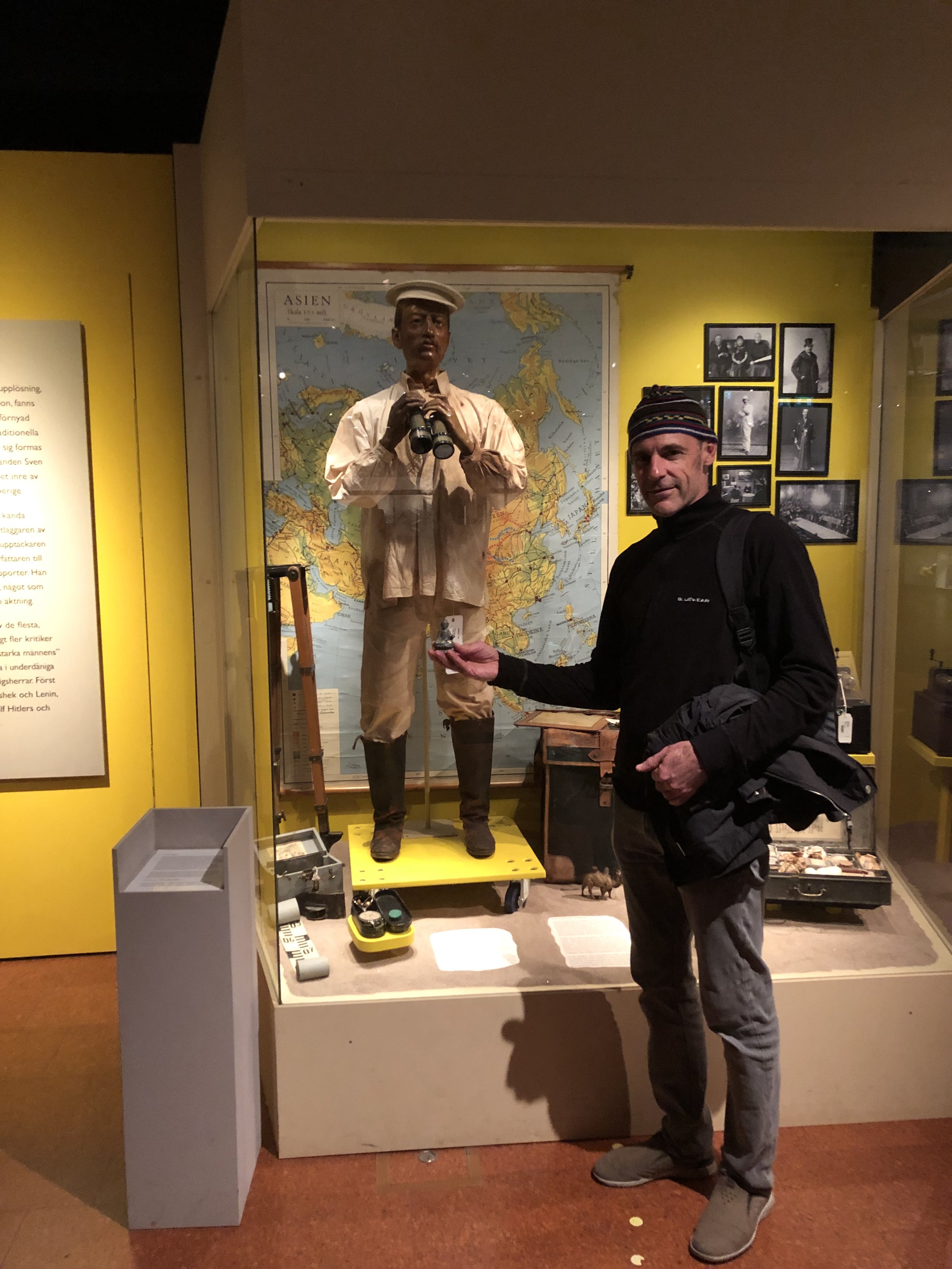The Museum of Ethnography
One of the four National World Culture Museums in Sweden is the Museum of Ethnography at Djurgården, Stockholm. It exhibits culture from all over the world. During our visit in September 2021, we had an interest in Asia in general, the Silk Road and Central Asia in particular. The museum has a section called “The Storage-an Ethnographic Treasure”. One of the displays contains Buddhist statues, many of them Bodhisattvas and miniature gold gilded Tibetan style pagodas that have been collected by Sven Hedin. This is a fraction of the items brought back by Sven Hedin from his three expeditions to Asia. The online facility of the Museum provides access to the photographs of the items in the extensive museum collections of around 440,000 artefacts from all over the world. There is also a wax model of Sven Hedin together with some of the equipment he used during his last expedition in 1927-1935. The Helgö Buddha would have moved along the Silk Road more than 1,000 years before Sven Hedin. The Museum also has a library, which is accessible to the public. The Sven Hedin Foundation maintains a facility at the Ethnographic Museum, where a collection of his books, notes, letters as well as some of the furniture from his apartment where he used to work, are kept.
A year ago, I spent a few days researching the explorers of the silk road. It was striking to read that Hedin provided a reward for his expedition members who first found a document with written text when Hedin was excavating sites of ancient cities and temples on the Silk Road. There clearly was an ambition to find treasures and to take those away with him to Sweden. Most of these are from the area referred to as Chinese Turkistan or East Turkistan. Some of the items have subsequently been returned to China. The Hedin collection may be a relatively small part of the total treasures from the Silk Road that ended up in Europe, Russia and Japan.
Two explorers of the Silk road - Sven Hedin, Jac and the Helgö Buddha
Reading some of the selected writings of Hedin, it becomes clear that he developed a deep appreciation of the nature and the life style of travelling across the remote areas of Tibet and the deserts of Western China as well as the spiritual values of Buddhism, especially in Tibet. His description of a visit to the Tibetan holy town of Shigatse and his meeting with His Holiness Tashi Lama demonstrates his deep interest in and respect for Tibetan Buddhism. The period between the third expedition and the fourth and last expedition, which is 17 years from 1909 to 1926, Hedin refers to as “the wasted years” as he could not travel to inner Asia. During this period, he undertook a pilgrimage journey to Jerusalem and the Holy Land but was critical of the way the tomb of Jesus and the churches and monuments commemorating his life and death were dominated by gold, glitter and riches.
It is interesting to note that the last expedition from 1927 to 1935 was financed firstly by Lufthansa as they were looking for a place to land aircrafts and refuel on the route to Shanghai from Europe, secondly by the Swedish Government and the last couple of years by the Chinese Government, who wanted to understand how roads could be built in the western part of the country. The expedition was also sponsored by Ford, the car maker. That expedition was probably among the last of an era of classical explorations that came to an end and was replaced by new technology and other means of travelling and modes of transport. If the first world traveller was Marco Polo, Hedin was keen to be seen as the last of the world’s classic explorers.
After enjoying the exhibitions, we had lunch at the museum restaurant that serves Asian food. Sri Lankan dhal curry was the most intriguing dish on the menu, which could not be resisted. It was not exactly the real authentic thing but close enough.
